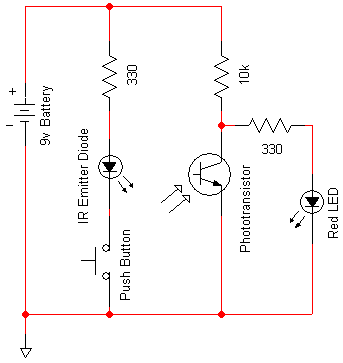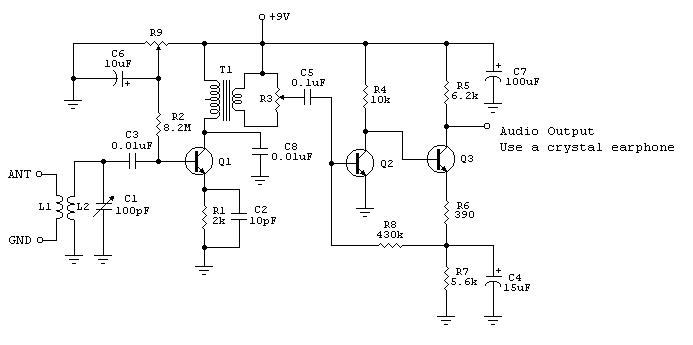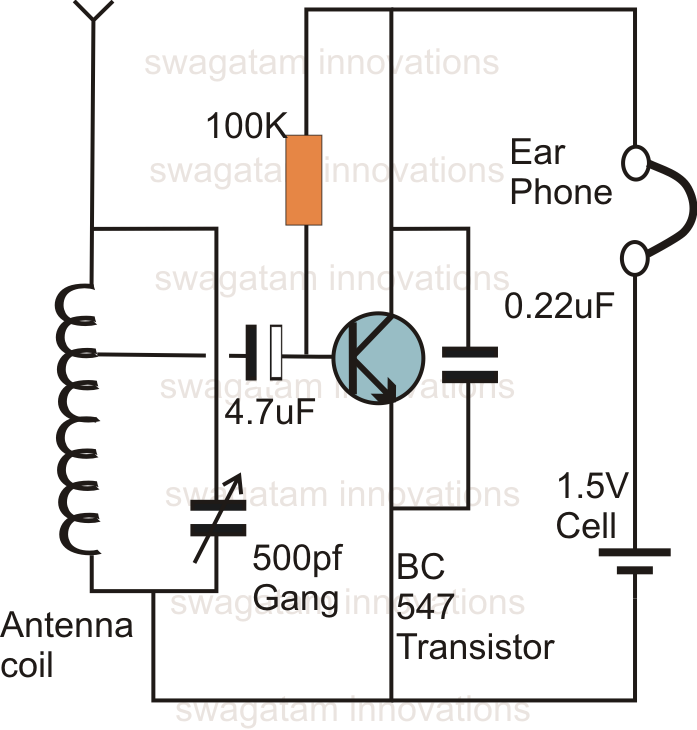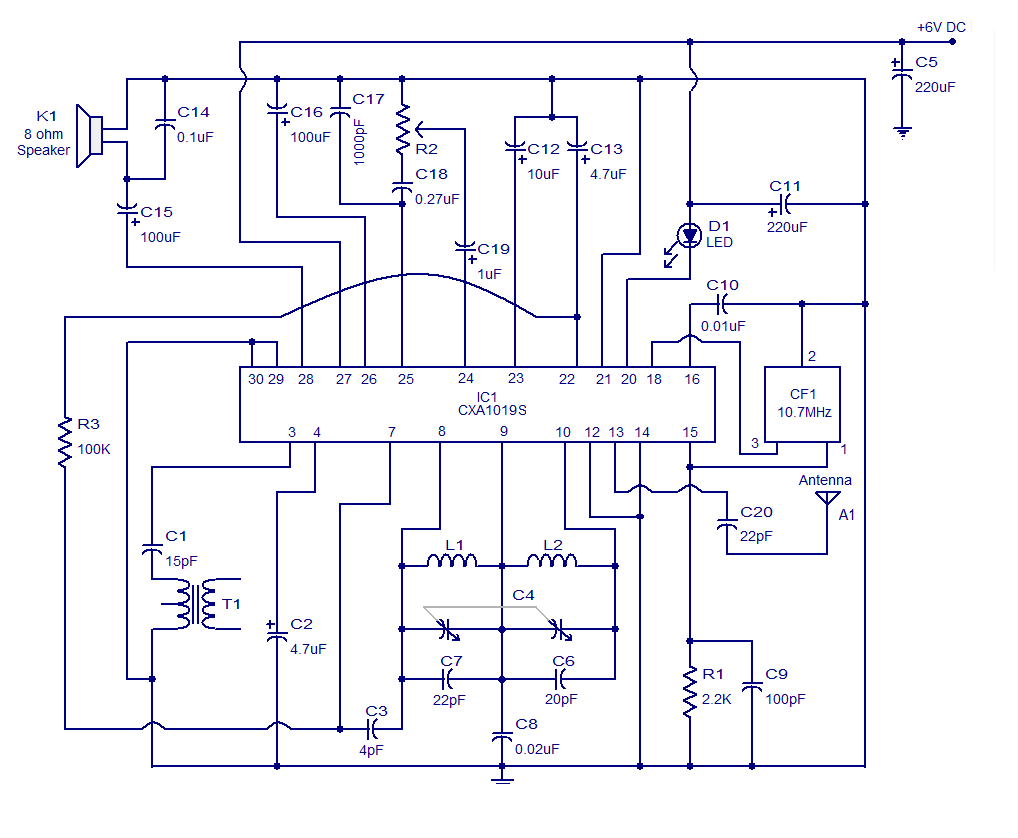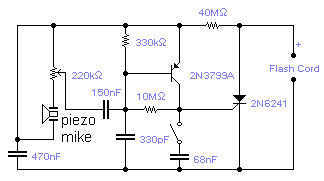
ULTRASONIC SOUND RECEIVER
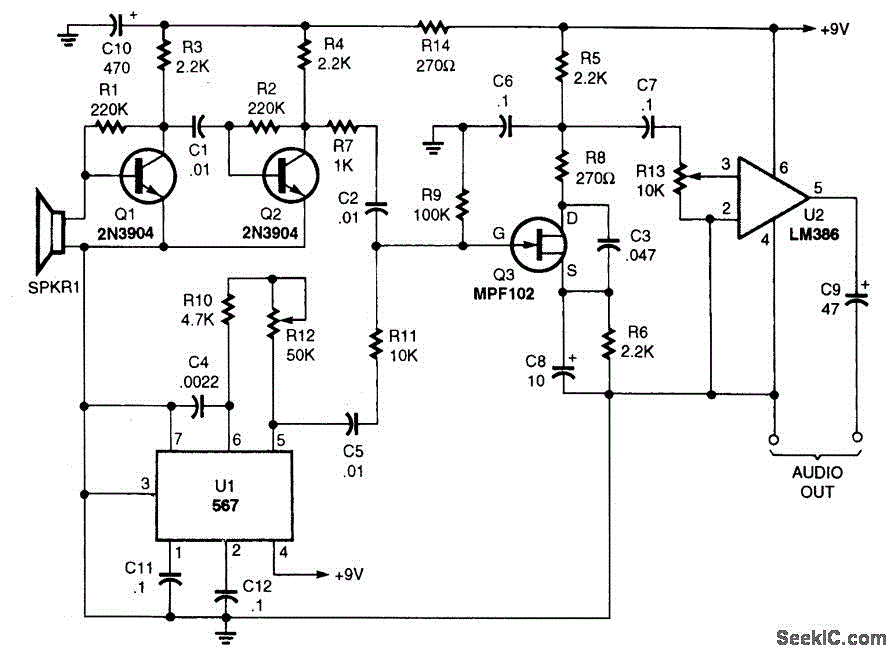
The performance of this sensitive ultrasonic receiver is impressive. It allows users to listen to various sources of ultrasonic sounds, including bugs, bats, and engines. The circuit utilizes a piezo tweeter as an ultrasonic microphone, with amplifier stages Q1 and Q2, and a local oscillator (LO) using a 567 IC. Q3 functions as a mixer that heterodynes the ultrasonic sounds down to a lower frequency.
This ultrasonic receiver circuit is designed to capture and amplify high-frequency sounds that are typically beyond the range of human hearing. The key component, a piezo tweeter, serves as the sensitive microphone that detects ultrasonic waves. When these waves strike the piezo element, it generates a small voltage signal proportional to the sound pressure.
The circuit includes two transistor amplifier stages, Q1 and Q2, which are configured to boost the weak signals received from the piezo tweeter. These amplifiers are crucial for increasing the signal strength before it is processed further. The 567 IC is employed as a local oscillator, providing a stable reference frequency that is essential for the mixing process.
Q3, the mixer stage, takes the amplified ultrasonic signals and combines them with the output of the local oscillator. This heterodyning process shifts the frequency of the ultrasonic signals down to a range that can be more easily processed and listened to, typically within the audible spectrum. The output from the mixer can be connected to a standard audio amplifier or headphones, allowing the user to listen to the converted sounds.
Overall, this ultrasonic receiver circuit is an effective tool for detecting and analyzing ultrasonic phenomena, making it suitable for various applications in wildlife observation, mechanical diagnostics, and other fields where ultrasonic detection is beneficial.You won`t be disappointed with the performance of this sensitive ultrasonic receiver. It can let you listen to bugs, bats, engines, and virtually any other source of ultrasonic sounds. This circuit uses a piezo tweeter as an ultrasonic microphone, amplifier stages Q1, Q2, and an LO using a 567IC. Q3 is a mixer that heterodynes the ultrasonic sounds down to.. 🔗 External reference
This ultrasonic receiver circuit is designed to capture and amplify high-frequency sounds that are typically beyond the range of human hearing. The key component, a piezo tweeter, serves as the sensitive microphone that detects ultrasonic waves. When these waves strike the piezo element, it generates a small voltage signal proportional to the sound pressure.
The circuit includes two transistor amplifier stages, Q1 and Q2, which are configured to boost the weak signals received from the piezo tweeter. These amplifiers are crucial for increasing the signal strength before it is processed further. The 567 IC is employed as a local oscillator, providing a stable reference frequency that is essential for the mixing process.
Q3, the mixer stage, takes the amplified ultrasonic signals and combines them with the output of the local oscillator. This heterodyning process shifts the frequency of the ultrasonic signals down to a range that can be more easily processed and listened to, typically within the audible spectrum. The output from the mixer can be connected to a standard audio amplifier or headphones, allowing the user to listen to the converted sounds.
Overall, this ultrasonic receiver circuit is an effective tool for detecting and analyzing ultrasonic phenomena, making it suitable for various applications in wildlife observation, mechanical diagnostics, and other fields where ultrasonic detection is beneficial.You won`t be disappointed with the performance of this sensitive ultrasonic receiver. It can let you listen to bugs, bats, engines, and virtually any other source of ultrasonic sounds. This circuit uses a piezo tweeter as an ultrasonic microphone, amplifier stages Q1, Q2, and an LO using a 567IC. Q3 is a mixer that heterodynes the ultrasonic sounds down to.. 🔗 External reference
